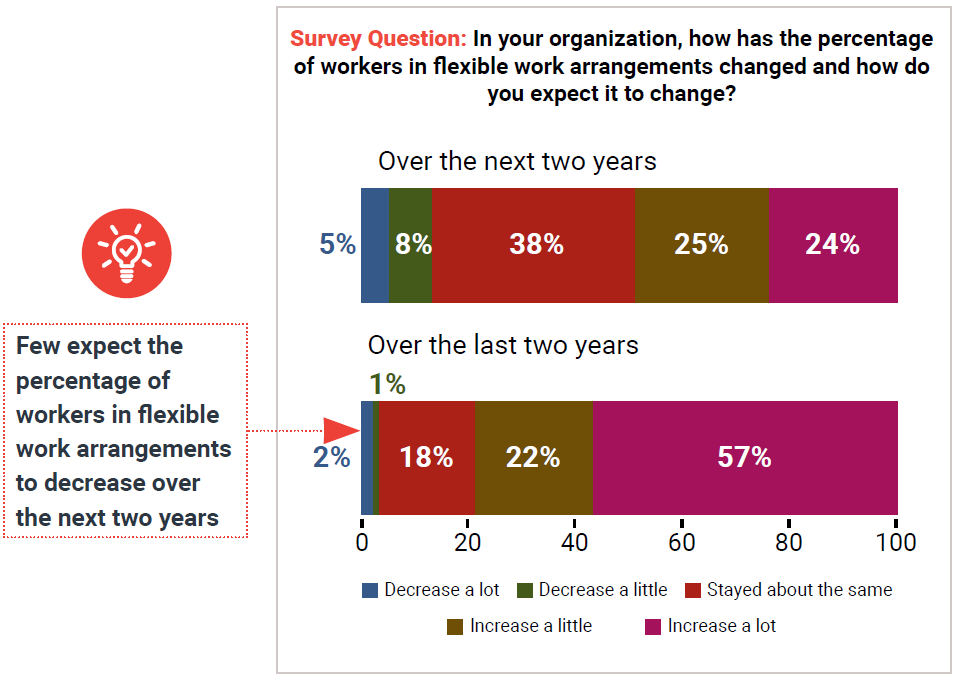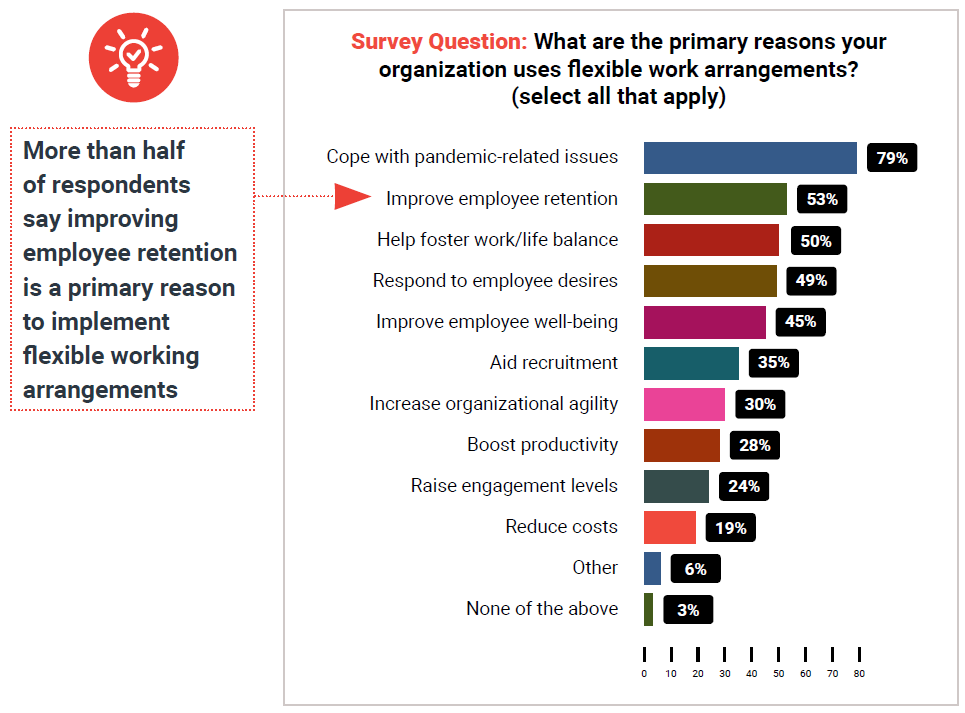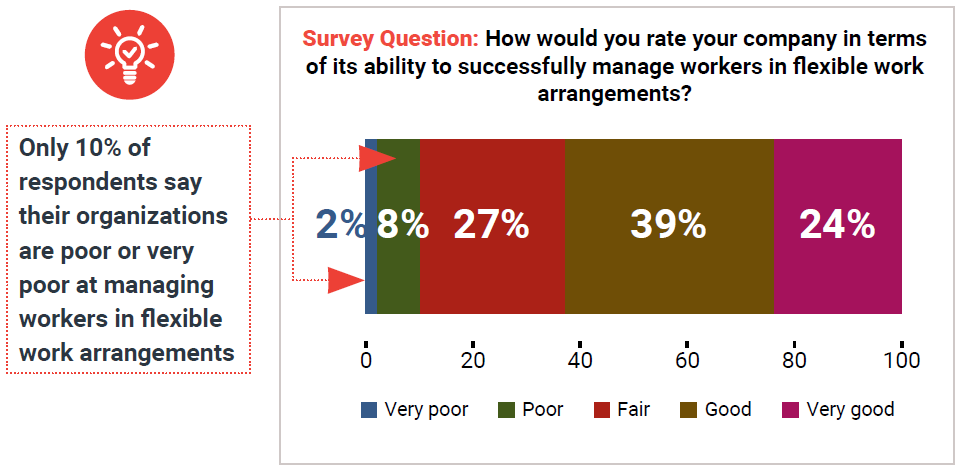In the survey, we presented respondents with the following definition:
The term flexible work arrangement refers to arrangements that allow employees to choose when, where, and/or how long they work.The idea is to give employees, and sometimes employers, greaterwork flexibility.

Flexible work arrangements have dramatically increased and will likely grow in many organizations even after the pandemic ends
The pandemic has served as a catalyst for flexible work options. Seventy-nine percent say that the percentage of workers in flexible work arrangements increased a lot or a little over the past two years. Even more dramatic is that most of these organizations increased the use of flexible arrangements a lot—more than half of all responding organizations have done so.
Furthermore, about half of these organizations expect to see an increase over the next two years. Assuming a large portion of this timeframe will be post-pandemic, these expected increases will no longer be driven by the need to slow contagion but because they make business sense.
Differences by size of organization
Large organizations (71%) are more likely than small (46%) and midsized (55%) organizations to say the proportion of workers in flexible work arrangements increased a lot over the last two years. Further, they are slightly more likely to say the percentage of workers in flexible work arrangements will increase a lot over the next two years as well.
The pandemic remains the primary driver of flexible work arrangements
As with our 2021 study, HR professionals indicate that coping with the pandemic remains the primary driver of flexible work arrangements, chosen by 79%. Another 53% cite improved employee retention and 35% cite improved recruitment, notable increases from last year’s survey (41% and 16%, respectively).
This increase might be attributed to what has been dubbed the “great resignation,” which is an economic trend in which large numbers of employees voluntarily resigned from their jobs in 2021. Although the trend may also apply to parts of Europe and Asia, it is usually seen as a U.S. phenomenon.
Among other key reasons organizations embrace flexible arrangements are the desire to:
- foster work/life balance
- respond to employee desires
- improve employee well-being
Nearly two-thirds of respondents say their organizations are good or very good at managing workers in flexible work arrangements
As of this report’s release, we are now two years into the pandemic. In this short period of time, how and where we work has changed drastically. Many organizations had to move to remote working arrangements almost overnight. New work policies and guidelines had to be crafted, and communication technologies had to be implemented and adopted.
Encouragingly, 63% of respondents indicate their company is now good (39%) or very good (24%) at managing workers in flexible work arrangements. A mere 10% indicate their companies are poor or very poor at this.
On the other hand, over a third (37%) say their organizations are only fair or worse, so it’s clear that there’s still much room for improvement.


